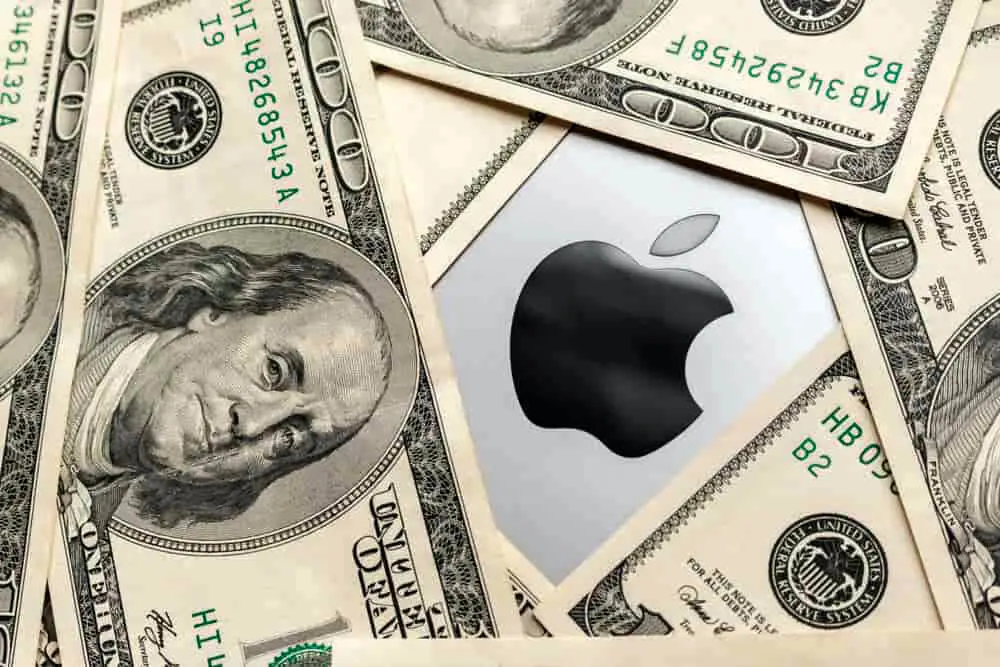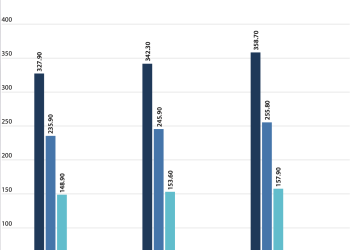December 8, 2022 Justinas Baltrusaitis

Amid the growing competition in the technology sector, Apple (NASDAQ: AAPL) continues to sustain its position at the top by releasing innovative products and services to suit its loyal client base. Notably, Apple’s position in the market can be tied to its innovative strategy, which continues to witness a significant budgetary allocation.
In particular, data acquired and calculated by Finbold on December 8 indicates that between 2018 and 2022, Apple spent $97.37 billion on Research and Development (R&D). Between the five years, Apple’s spending on the segment surged 84.33% from $14.24 billion in 2018 to $26.25 billion in 2022.
Indeed, spending on research and development has been growing steadily in recent years. In 2019, the value stood at $16.22 billion, growing by over 15% to 2020’s $18.75 billion. In 2021, the spending surpassed the $20 billion market for the first to hit $21.91 billion.
Why Apple’s innovation spending is rising
Apple’s spending partly aligns with the company’s business model, which seeks to create disruptive innovation and gain a competitive advantage. The company has maintained that expenditure on research and development aims to improve user experience and differentiate the firm’s products and services in the marketplace. In this case, Apple has been on a relentless journey of refinement, leading to the release of better versions of products.
Notably, 2022 spending has risen despite the economy remaining depressed, characterized by high inflation and the threat of interest rate hikes. Furthermore, Apple is set to incur losses over its decision to exit the Russian market following the country’s invasion of Ukraine. The situation has resulted in Apple’s stock faltering in line with the general market as the firm implements strategies to sustain its business amid the challenging times.
Apple’s reaction to the current economic crisis has offered a glimpse of how the company values the research and development department. For instance, Apple has paused hiring for several jobs besides research and development. The measure was adopted to reduce its budget as the uncertainty prevails. It can be assumed that Apple’s previous investments are potentially helping the company navigate the current uncertainty. Notably, Apple has not been immune to the raginginflation, supply chain issues, and the long-standing effects of the Covid-19 pandemic.
The implication of Apple’s R&D spending
The spending can also be interpreted as Apple having more products and services in its research line beside the current iPhone, iPad, Mac, and Apple Watch, among others. Furthermore, the budget might indicate Apple’s potential to pivot to another new product and service. Overall, the R&D budget seeks to improve the company’s cash cow products like the iPhone.
At the same time, innovation spending has informed Apple’s strategy of seeking to own and control the technology driving the company’s primary products. Therefore, over the period, Apple has been on an acquisition spree to enhance the foundation for building new products and services.
Furthermore, the R&D will elevate Apple towards more revenue alongside reinforcing its brand image. Historically, Apple has maintained a loyal customer base due to its strong brand image. Therefore, the company must invest more in its product research to retain this status.
The regulatory debate
However, amid the accelerated spending spree, Apple, like other tech giants, faces the hurdle of regulatory scrutiny. In recent years, the company has come under sharp scrutiny from regulators concerning antitrust issues. In this case, the company might be required to spend more.
Interestingly, with Apple appearing to sustain its spending on R&D, analysts maintain that the United States tech giant is lagging behind its competitors. Consequently, the expenditure will trigger more competition translating to the extra allocation of funds towards innovation.
In general, Apple’s R&D spending doesn’t guarantee profitability or strong stock performance. However, the expenditure can start paying off when the projects under research turn out successful. Similarly, Apple can also be impacted by poor performance losses even after pouring a significant sum into innovation.




